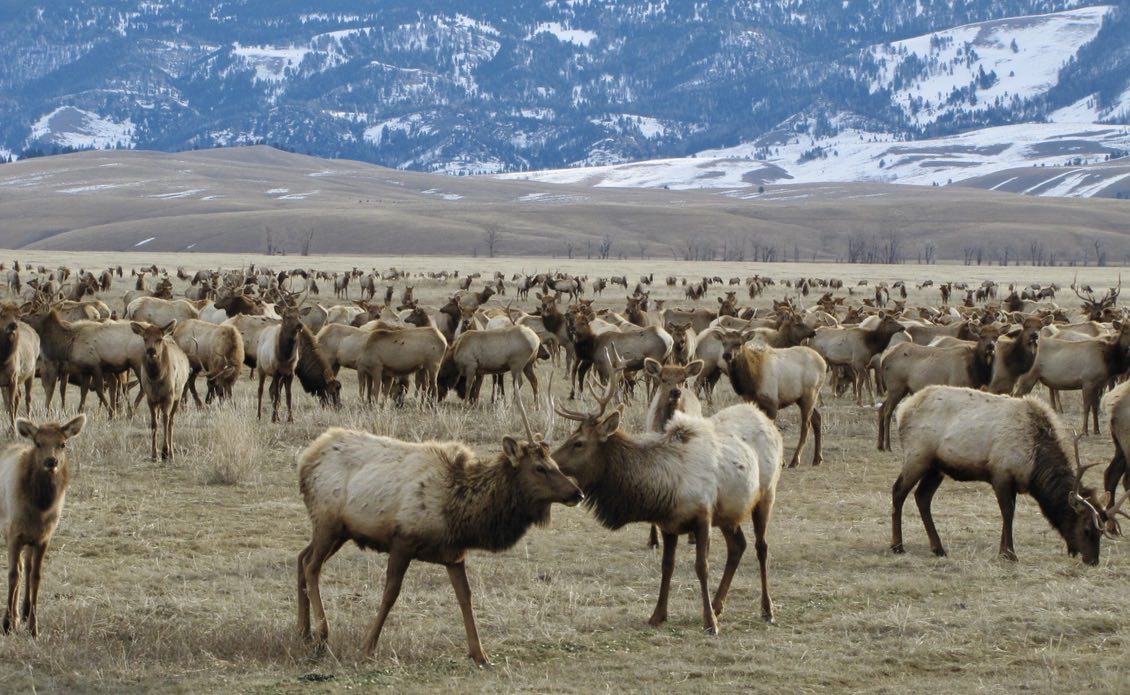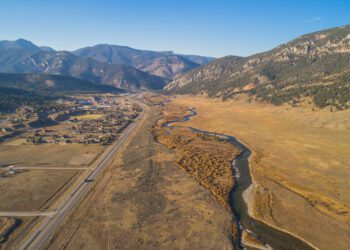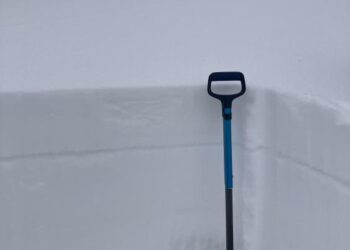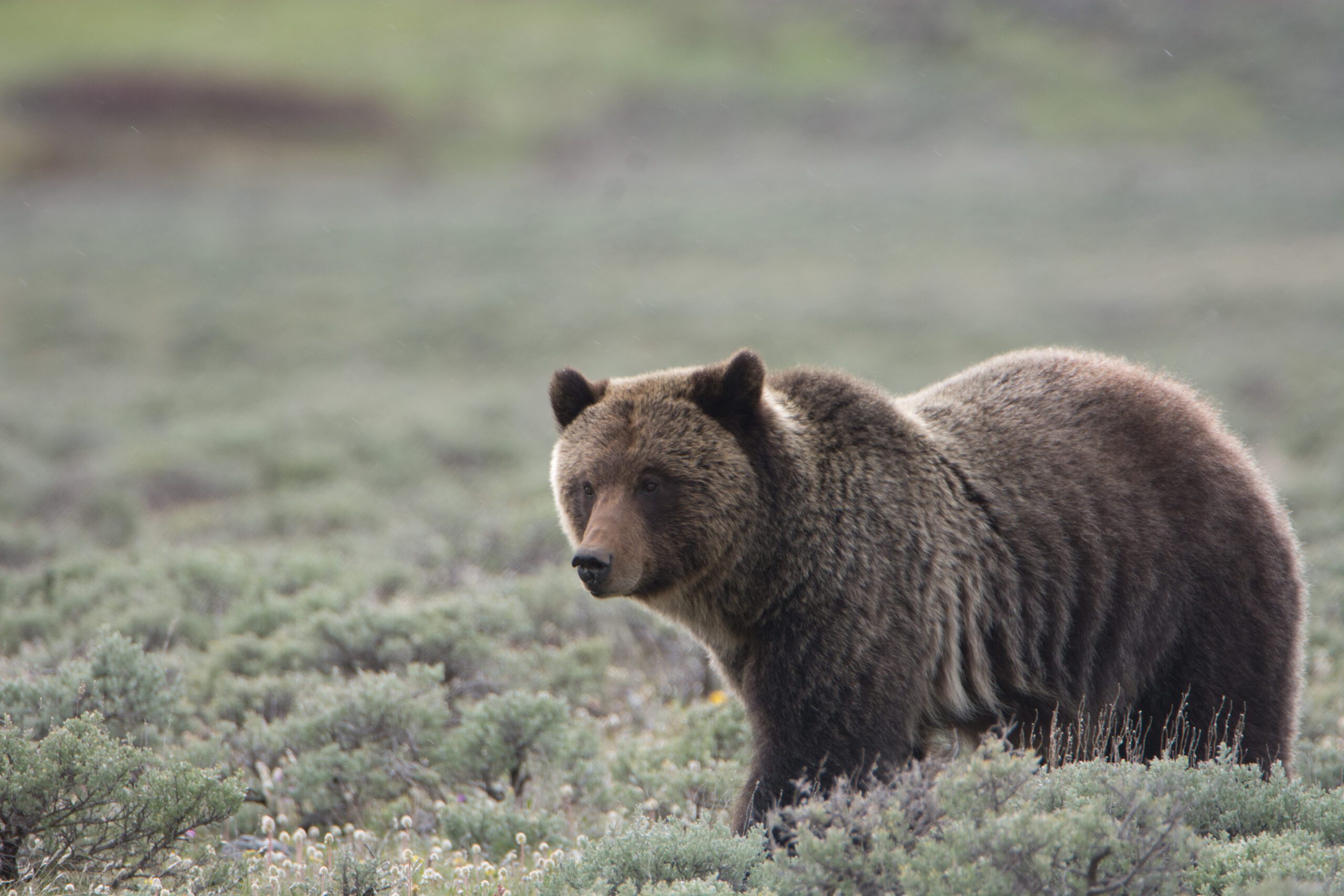By Todd Wilkinson EBS Environmental Columnist
If annus horribilis—the year otherwise known as 2020—has taught us anything, it is that modern Americans, in ways unprecedented, have received a mass crash course in the vagaries of contagious disease epidemiology.
And, if there is one singular take-home message, it’s that when a deadly pathogen is spreading, it’s incredibly unwise for host species to be bunched up, for that is an important factor in determining whether virulence of disease speeds up or slows down.
This is not a truism of maladies affecting just humans; it is a gospel for most kinds of disease control, including diseases classified as epizootic diseases, i.e. those that can spillover from animal species to human, and vice versa.
In early December, loud concern was voiced when it was confirmed that a cow elk in Grand Teton National Park, near the invisible boundary of the National Elk Refuge, had tested positive for Chronic Wasting Disease.
CWD, as it is known, is a cousin of Mad Cow Disease, the prion disease that spread from cattle in the United Kingdom to humans. CWD afflicts cervids, members of the deer family that in the Lower 48 includes elk, moose and most prolifically, deer. In the Arctic, it also sickens reindeer/caribou.
While no cases of CWD being transmitted to people who eat contaminated game meat have ever happened, that doesn’t mean it won’t happen, disease experts say. And even if that doesn’t occur, CWD is still a dreaded plague, for it is always fatal in deer species. There is no cure or vaccine.
CWD has been rapidly spreading through wild deer and elk populations in the West and only a few years ago it reached herds in Montana, coming from Wyoming, the Dakotas and the Canadian Prairie Provinces where it is now endemic.
South of us in the Greater Yellowstone Ecosystem you will find the largest complex of artificial feedlots for wild elk in the world. Between the federal Elk Refuge and 22 feedgrounds operated by the state of Wyoming, more than 20,000 are given alfalfa pellets or hay during the winter.
The net effect is that thousands of wapiti bunch up around those rations. Outfitters and guides support feeding because it results in more elk staying alive during the winter and more elk means better hunting opportunity for clients. Ranchers also favor feedgrounds because it keeps elk away from their private pastures where they are feeding cattle.
But many prominent experts in areas of wildlife management and epidemiology say that feedgrounds, with CWD now present, are setting the famous public elk herds of Greater Yellowstone up for disaster.
While CWD normally moves slowly and devastatingly through herds over time, feedgrounds are likely to accelerate the spread of disease, says Dr. Thomas Roffe, the now-retired former chief of animal health for all of the U.S. Fish and Wildlife Service, which operates the Elk Refuge. Roffe is an expert on CWD and for decades he and others warned that feedgrounds are the worst possible wildlife management practice in the face of an advancing ultra-lethal pathogen.
In some ways, it’s kind of akin to filling the pews of mega-churches with devotees who remain there for four months without wearing masks, with known COVID-19 carriers in their midst.
In response to the CWD-positive elk, neither the Elk Refuge nor Wyoming Game and Fish say they have any plans of markedly altering their hay-feeding regimens this winter. Instead they will engage in monitoring and surveillance, testing animals that appear to be ill, or are struck by cars and adding to a database of thousands of samples collected from hunters who turned in heads of elk and deer for analysis.
This is what most of the two dozen states where CWD occurs normally do to help determine if it is spreading, but no other state where CWD is present clusters 20,000 animals together around feedgrounds; hence, that’s why experts like Roffe and others fear CWD could take hold in ways much deeper than normal and be carried more widely around the ecosystem when wapiti migrate to summer ranges in the spring.
Also frightening is that many CWD carriers are initially asymptomatic and, once infected, may not die for a couple of years. The infectious agents, prions, are shed into the environment via saliva, feces, urine and bodily tissues that stay in soils and can cause infection for several years.
As the widely respected veterinarian Dr. Roffe says, we are now in uncharted territory. The federal Centers for Disease Control recommends that all game animals in CWD-endemic areas get their meat tested and never to eat animals that are CWD-positive. If CWD proliferates, it will bring a lot more tough questions relating to spread, environmental contamination and possible risks for humans, other mammals and livestock that currently are unaffected.
Among all of the big issues likely to shape the future of Greater Yellowstone, the richest and most regional for large wild megafauna in America, this will be one issue to watch closely. And, as always, the most important thing necessary for public discussions going forward will be arming ourselves with the best scientific facts—not mere hearsay or windshield biology.











